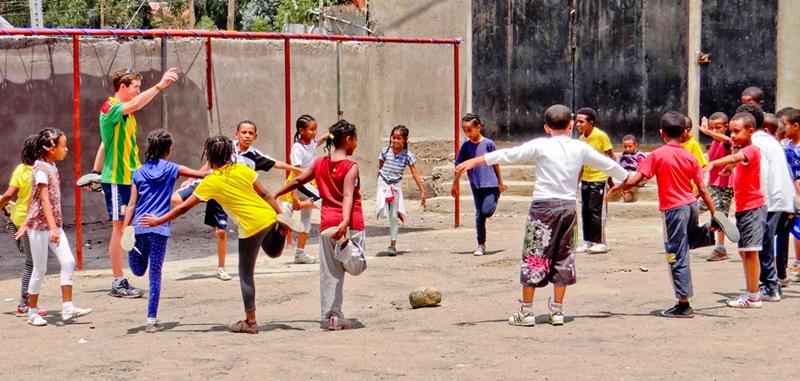INTRODUCTION: TEACHING STYLES IN PHYSICAL EDUCATION
In this post Physical Education Tips will deal with Teaching Styles in school Physical Education , based on Mosston ‘s teaching styles (1966). We’ll talk about the following teaching styles: command, task, reciprocal, self-check, inclusion, guided or guided discovery, divergent and convergent problem-solving, individual teaching style, student-initiated and self-teaching.
TEACHING STYLES IN SCHOOL PHYSICAL EDUCATION
Within the methodology of teaching Physical Education, it is important to emphasize that, in practice, many styles of teaching Physical Education can coexist, and it is very difficult to find an integral or unique application of one of the teaching styles reported in this post.
COMMAND TEACHING STYLE
The command style of teaching is a physical education teaching methodology whose basic characteristic is stimulus-response. Within this physical education methodology, teaching is centered on the teacher and the content. This teaching style is based on reproduction. All decisions are made by the teacher at every stage of the teaching process. The teacher determines the content, the location, the order of the activities or tasks, the beginning and end, the break, describes the exercises, demonstrates and reports on the quality of the response.
TASK-BASED TEACHING STYLE
The task-based teaching style is a Physical Education teaching methodology whose basic characteristic is to shift certain decisions from the teacher to the student. The student is given a bit of a leading role in the execution phase of the lesson’s activities. However, in the Task teaching style, all students are still expected to perform the activity according to the model, following a pattern as in the Command teaching style. The difference between the Command and Task styles is that the student has the opportunity to make some decisions during the lesson.
RECIPROCAL ASSESSMENT TEACHING STYLE
The Reciprocal teaching style is a Physical Education teaching methodology whose main characteristic is social interaction in partnership. The Reciprocal style involves carrying out activities in pairs. Students learn to carry out the proposed activity and receive feedback from their fellow partners, in addition to the teacher, of course. This teaching style focuses on the social relationships between people and the different forms of feedback.
See also – Sports Teaching Methods
In this Physical Education methodology, there will always be the student performing the activity and the student observing, with the teacher observing both. The teacher only has to communicate with the observing student to help with feedback.

SELF-CHECK TEACHING STYLE
The Self-Check teaching style is a Physical Education teaching methodology that has the characteristic of shifting the responsibility for feedback from the teacher (in the command and task styles) or from another student (in the reciprocal style) to oneself. In this way, the aim of this style of teaching is to get the student to learn to do their own feedback using the execution criteria provided by the activity itself. In this way, the student starts to self-evaluate using specific criteria and starts to have new skills and new responsibilities.
INCLUSION TEACHING STYLE
In this methodology of Physical Education, various levels of difficulty are planned for the same activity, with the intention of including all students in the activity, with the level of difficulty varying according to the possibilities of each student. The teacher explains the activity and gives some options for levels of difficulty, the student makes a self-assessment and chooses the level of execution at which they feel capable of carrying out the activity. Any choice made by the student must be accepted.
GUIDED DISCOVERY TEACHING STYLE
TheGuided Discovery teaching style is a Physical Education teaching methodology whose characteristic is theprivate teacher-student relationship, in which the sequence of questions posed by the teacher leads to asequence of answers from the student in a convergent process leading the student to discover the concept and the desired learning. In this style of teaching, the student starts to discover new concepts.
CONVERGENT PROBLEM-SOLVING TEACHING STYLE
TheConvergent Problem Solving teaching style is a Physical Education methodology whose basic characteristic is to propose a problem that will have a single solution. The aim of this style of physical education teaching is to discover the solution to a specific problem, to clarify a specific issue, to reach a conclusion, employing logical procedures and forwarding a single answer as the solution.
DIVERGENT PROBLEM-SOLVING TEACHING STYLE
TheDivergent Problem Solving teaching style is a Physical Education methodology whose main characteristic is the search for multiple and divergent answers, contributing to a greater relationship between the motor and cognitive aspects. The objectives of this style of teaching are to understand and perceive the structure of the activity, develop creativity and the ability to verify various solutions to a given problem.
See also ⇒ Physical Education Competitions Workbook
INDIVIDUALIZED PROGRAMMING TEACHING STYLE
The individualized programming teaching style is a physical education teaching methodology whose characteristic is individualized work, through the individualization of the program based on the content decided by the teacher. This teaching methodology is based on the existence of individual differences, allowing it to cater for students who need special care.
STUDENT-INITIATED TEACHING STYLE
Thestudent-initiated teaching style is a Physical Education teaching methodology whose basic characteristic is that the student leads their teaching and learning, i.e. all decisions are made by the student.
SELF-TEACHING STYLE
The self-teaching style of teaching is a Physical Education methodology whose characteristic is to completely dispense with the presence of the teacher. The aim is for the student to teach themselves. The student will make all the decisions at every stage.